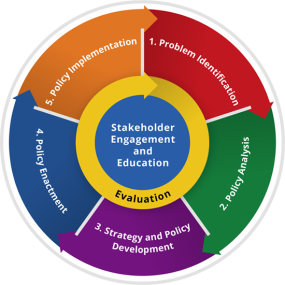How Do You Identify a Systems Problem?


Some of the policy issues public health professionals face can be difficult to understand and challenging to resolve. Youth violence, teen pregnancy, and obesity—to name just a few—are complicated and multi-factorial problems that can feel very “messy” at times. These are called systems problems, and they might benefit from new ways of thinking about both the issues and the potential solutions.
What is the ‘system’ in systems thinking?
A system refers to the elements that work together to generate the results you want or desire to change. The system is the interplay between: policies and procedures, infrastructure, spending decisions, human actions, and intangible drivers of behavior (e.g., trust, goodwill, etc.).
Chances are that the public health issues of concern to you share characteristics of “systems problems.” Systems problems share four fundamental characteristics:
- They are dynamic in nature, meaning they change over time
- They include multiple organizations/people with diverse interests
- They are interconnected, meaning that dependencies between individuals, organizations, regions, etc. exist and are important
- They can be hard to describe
Recognizing systems problems can be a valuable process for better understanding the causes of the problem, deciding on various policy options, and engaging with partners and decision makers—which can lead to identifying higher impact solutions.
It’s possible to use Thinking in Systems (TiS) to effectively frame systems problems and to think through the design of policy initiatives that generate intended effects while minimizing unintended consequences. TiS enables individuals and groups to come together to a clearer understanding of what the problem looks like, how the underlying system works, and where there might be potential for policy leverage.
How Can You Use TiS with the CDC Policy Process?
Evaluation and Stakeholder Engagement and education take place during every domain in the process.
Because many of the issues or problems faced in public health are “systems problems,” understanding some key sets of systems thinking skills can help at various phases of the CDC Policy Process, including: identifying policy problems, analyzing solutions, better informing decision-making, and improving stakeholder engagement.
